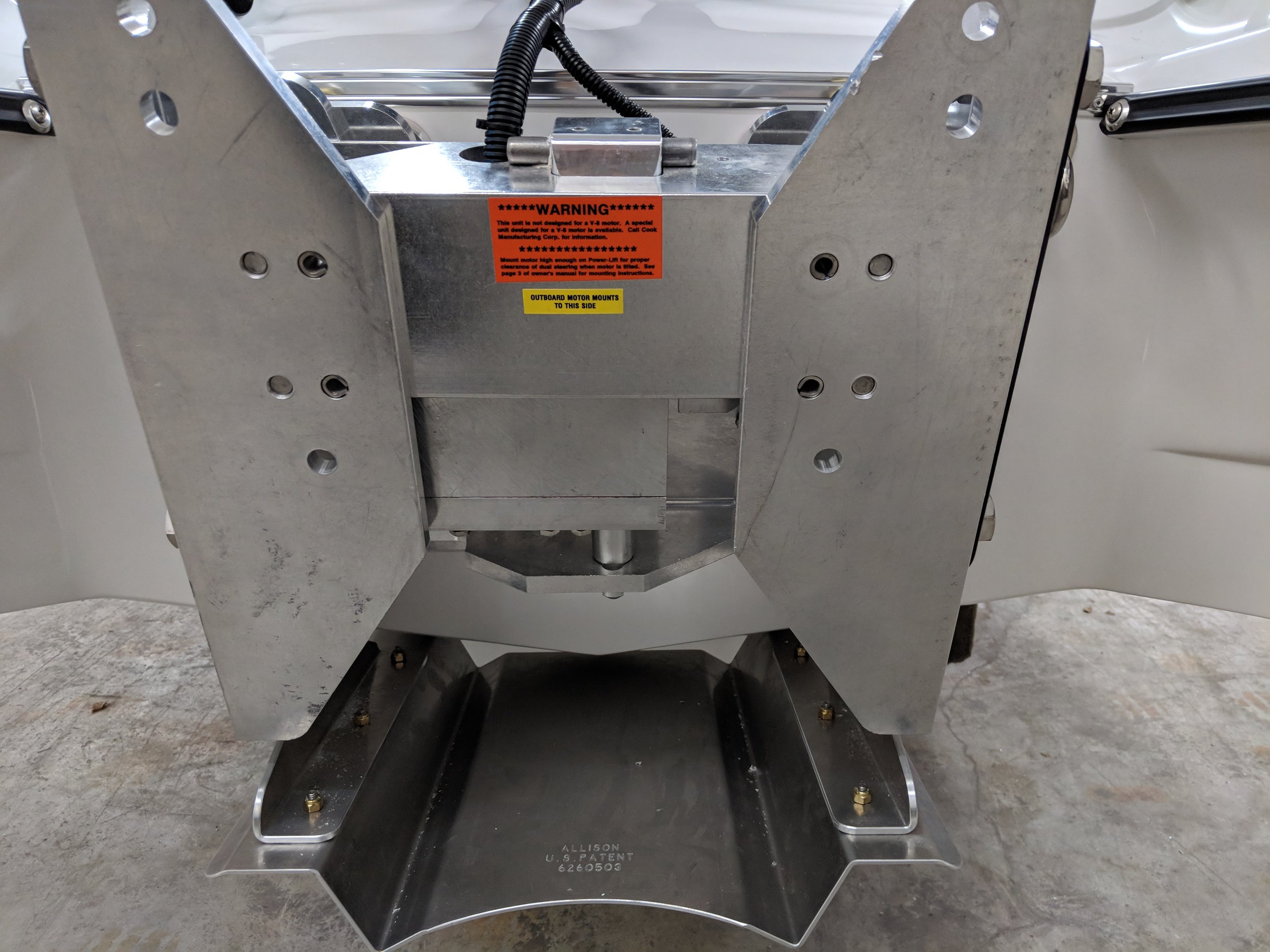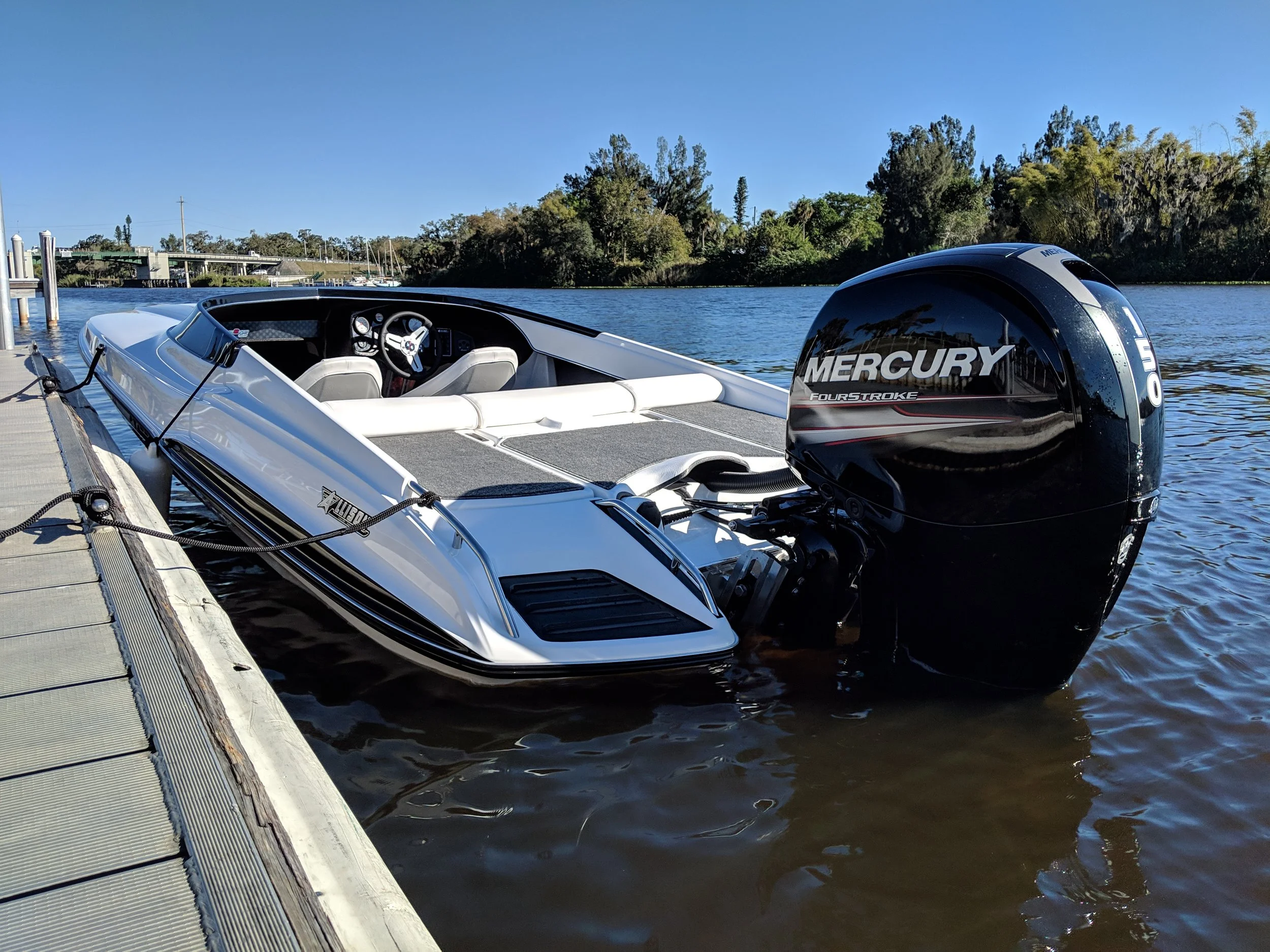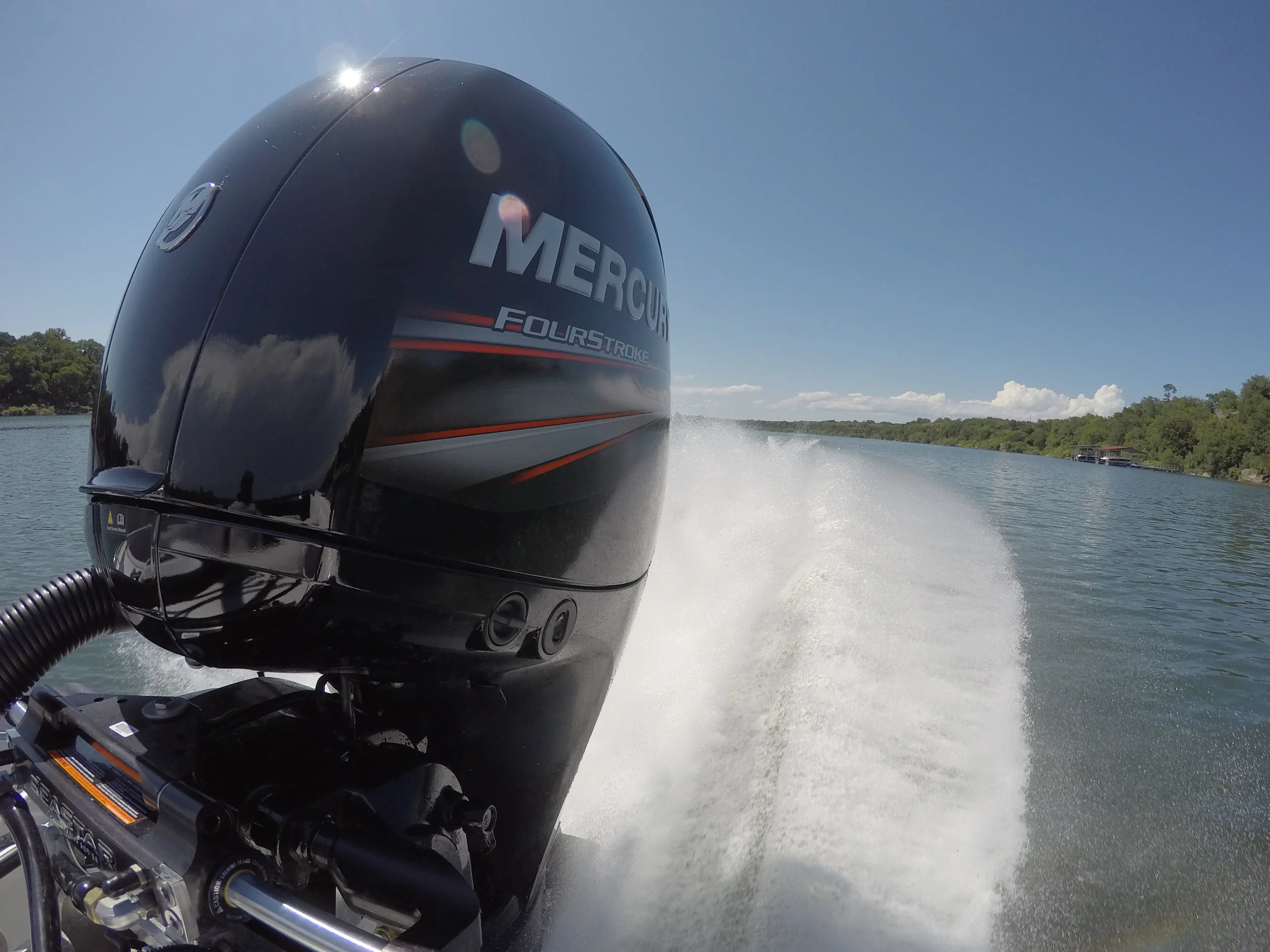Built for Efficiency: An Allison Grand Sport Powered by a Mercury 150
On paper, this looks like an odd combination, taking Mercury Marine’s stock four stroke 150 HP, and pairing it with one of the fastest sport boats ever made. But, when you really think about it, the Allison Grand Sport was built to be efficient, not just the fastest. The hull is proven in racing, the XR 2003 shares the hull design, with a few changes, and the Grand Sport is the “family” sport boat version. We wanted to take the affordable, efficient, and super reliable stock 3.0L 4 cylinder engine and test it on the Allison, to see what it can do. Of course, we won’t keep it stock, what fun would that be? We want to prove that the lighter 4 cylinder four strokes can make decent power and be bulletproof.
History
When the Grand Sport was born, around 1991, light 150 to 200 HP V6 engines were a good pair for the super sleek Allison. Later, in 1994, when the Pro Max engines came out, you could say they were the perfect pair. First, it was the 150 and 200 HP Pro Max, both 2.5L engines with some Mercury Racing tuning; solid mounts, high performance 5 petal reeds, and optional gearcases. You could get the Torquemaster 2:1, or the sleek XR6 1.78 gearcase. I wish Mercury offered optional gears with their engines now. The Mariner Super Magnums were the same, and very rare engines. The 150 and 200 were basically held back in terms of HP, because when the 225 Pro Max came out, it was a compact beast, based on the same premise as its 150 and 200 siblings, but had thinner rings, larger intake, and 7 petal reed valves. Later, the 225X, was similar, but with high performance sport jet style reeds like those from the 280. The Pro Max’s were great engines, the 150 was super underrated, as were all of them.
Pro Max
An iconic picture of the Allison Grand Sport with a 150 Pro Max.
Mercury 150 Four Stroke
This brings us back to the pedestrian four stroke 150 today. What is good about it? Well, it’s relatively light and compact by today’s standards. With a simple single overhead cam design, you get simplicity, and solid low end torque. Although SOHC engines typically can’t rev like DOHC designs, it’s not really a problem until you are getting into the much higher RPM range. Another thing about the 150 is the 3.0L displacement, it’s only 4 cylinders, but that is enough to create way more power than 150 HP. Mercury built this for durability and longevity, and they’ve proven to be very reliable. Plus, they are one of the most affordable 150 HP engines on the market, making them extremely popular. We weighed the engine, and it is 455 Lbs, as advertised, but that’s without the cowling, which is a heavy 22 Lbs.
Proportionally, the 4 cylinder Mercury looks pretty good. The V6 engines are getting cartoon like how big they are.
Mercury finally introduced a ProXS version of this engine. Out of the box, the Pro is a better option, it has stiffer upper mounts, and increased power from 158 HP (propshaft) to 163 HP, with 200 more RPM limit to 6,000 RPM. You also get low water pickups, with a slightly lower gear ratio, 2.08:1, the Pro XS is good for most users as is. We wanted to get this engine but it was unavailable at the time due to production not being able to keep up with demand.
Pro XS
Solid out of the box. Looks better too with the trademark XS logos.
Our stock 150 has a few hurdles to get around. One thing I didn’t realize until after our initial test was, it doesn’t have a water pressure sensor. This seems crazy, but it is plumbed in, without the sensor. We hooked up a Merc Monitor for testing, assuming we would watch our pressure to get the engine as high as possible, but we had no water pressure readout. Apparently you have to get a kit to hook that up. And, the regular 150 motor mounts are awful. You can move the engine around on the trailer with one hand. This only gets worse over time as the rubber compresses and breaks down.
Motor Mounts
As a side rant, engine builders today are so concerned about noise, vibration, and harshness (NVH), that they try to ensure you can’t hear or feel the engine. But, what happens is you try to solve a very tiny problem, vibration at idle, and you cause a much greater problem, the engine bouncing around dangerously under speed. Funny enough, there is a myth that solid mounts cause vibration; they are actually smoother at speed, and make steering way more precise. You can have the best steering system, but soft mounts render it ineffective. A classic case of trying to solve a problem that doesn’t really exist, and causing a much greater problem. When an outboard is bouncing around on the transom, it causes undue stress, you can feel it through the boat, and it negatively affects handling. I’m not saying all engines should have solid mounts, but semi solid and products like Delrin, offer a nice improvement with no drawbacks. Plus, solid mounts last way longer.
Parts List
So, our parts list is simple. We need solid mounts. I am debating whether to install the stiffer mounts from the ProXS, or get solid ones made. I am leaning toward making solid ones out of Delrin, at least for the lowers.
Next is the lower unit, we need a gearcase that has low water pickup, and can be run quite high. So, our options are limited, although we may be able to retrofit a Sportmaster somehow, I think it might be a pain to do, we will probably modify the existing gearcase. This engine has 1.92 gears, which is a slight advantage over the Pro, so with low water and a cone, we will be in good shape I think. Typically it is not an advantage until you are above 80 MPH, but we will be right there, and we need low water anyway, so it will suit our case. If you aren’t going over 80, and you don’t need to run you gearcase very high, it’s not necessary.
Once the the mounts and gearcase are taken care of, we can get a better baseline. Then, we will look at programming our ECU. This is something that will push us to that next level. Reprogramming the ECU allows the engine to circumvent the rev limiter, and supposedly can make more power. Some say, 20 to 25 more HP, and pushing the RPM to 6,700 RPM, that seems optimistic to me. I think we want to be in the 6200 to 6400 RPM range on our setup, and if HP is bumped even 10 or 15 HP, I’d be happy.
Testing
Our preliminary testing was very brief. We only had a short amount of time, but we learned a ton, and we were impressed so far. We used a Promax 28” prop, that had some modifications; the blades were trimmed at the base of the hub, this theoretically prevents exhaust gas from creeping onto the blades. So, the good news. The Grand Sport planes effortlessly with the Mercury 150, no bow rise and can hold being on plane at a ridiculous 12-13 MPH. The Allison skid planer helps, but our fears of the weight of the engine were not realized, there were no issues at all. No porpoise at all, no bad handling manners either. You really can barely hear it running at low speed, it can just cruise effortlessly all day. At about 2800 RPM, we could go 40 MPH, and get 10 MPG. That is incredible, because this prop probably isn’t the best for efficiency the way we had it setup. We can improve that number, which is already ridiculous. Because we couldn’t get a water pressure reading, we couldn’t push raising the engine, so we ran it about an 1-¼ inches below the pad, briefly tried slightly higher, and watched the temp gauge, but didn’t want to push it. With that, we ran a best of 72 MPH, at 5,400 RPM. Obviously, we want to get the RPM up, and I think we can by just slightly raising the engine.
Ready to test. With some modifications, could this be a perfect pair?
Next, we need the water pressure kit before we test anything else. Once that is on, we will test a slightly modified 26” Trophy, and hopefully have the solid mounts or the Pro mounts as well. That should help us get to a better baseline. For phase 2, we will then look at different gearcase options. Phase 3 will be the ECU, and maybe some other tricks. The cowling weighs 22 Lbs, so maybe a custom lightweight cowling? There might even be some modifications we can do to the exhaust and intake. Either way, I think this engine has great potential.
The new Allison jack plate is the strongest and lightest on the market, zero flex.
We won’t be spending much time or money at the gas station. 10 MPG at 40 MPH. Not bad.












